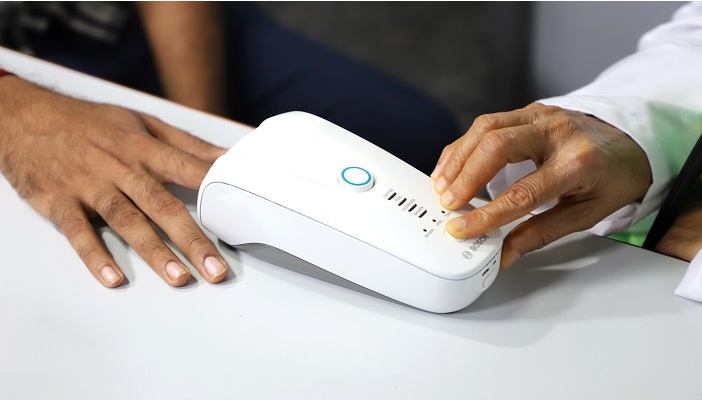According to estimations by the WHO 1.6 billion people suffer from anaemia. This has prompted the WHO to define the fight against anaemia as one of its critical sustainable development goals for 2025.
Cueing in to the need for early detection of anaemia without blood tests, Bosch has developed a portable Haemoglobin Monitor Solution (HMS) especially for regions where routine access to medical care tends to be difficult. This HMS allows many people to be screened for anaemia rapidly, safely, using a non-invasive approach. The solution has been named a CES Innovation Award Honoree in the “Health and Wellness” category. Market release in India is expected by mid-2021, as per a company statement.
“Bosch has developed the non-invasive haemoglobin monitor as an innovative solution and as an alternative to traditional methods for the early detection of anaemia. This should offer people better diagnosis options even in resource constrained conditions. The use of artificial intelligence is revolutionising anaemia management, specifically in point-of-care setups and closer to the patient”, explains Dattatri Salagame, President and Managing Director, Robert Bosch Engineering and Business Solutions Private Limited (RBEI).
Haemoglobin is a protein found in red blood cells and is responsible for carrying oxygen and carbon dioxide throughout the body. People with a low haemoglobin count may experience symptoms such as general fatigue, weakness, pale skin, and even serious illnesses. Anaemia particularly affects women, even more so when they are pregnant, and also people suffering from malnutrition. In cancer patients undergoing chemotherapy or in palliative care, haemoglobin levels should be checked regularly.
Haemoglobin results in 30 seconds using a non-invasive AI measurement
The intelligent solution by Bosch is designed for use directly at the point-of-care and is completely pain-free with no need for a blood test, as the value is determined by a finger scanner using multi-wavelength spectrophotometry on the surface of the skin. The system uses an optical sensor to precisely and reliably measure the photoplethysmogram (PPG) signals. PPG is an optical technique used to detect volumetric changes in blood in peripheral circulation.
The device provides a reliable result within 30 seconds even for low haemoglobin concentrations. This is where machine learning comes in: the device’s algorithm monitors the wavelength of the light and uses 27 different characteristics to determine and classify the haemoglobin value. The algorithm has been trained with more than 10,000 anaemia data points. These clinically collected data along with the corresponding ground truth data, are the basis for the machine learning algorithm. The more validated data sets are put into the continuously learning algorithm, the more precise the results will be.
Lab-free results without risk of infection
A laboratory analysis is not necessary and there is no risk of infection from contaminated needles. Participants receive their test results quickly at the point of care. The device is battery operated, does not need subsequent calibration, and is extremely easy to use. It is intended for use in outlying and remote regions by healthcare professionals. Location-based reporting ensures easy clinical traceability. Organisations that operate multiple devices can draw conclusions through heat maps about specific regions. Patient data remains anonymous.


















